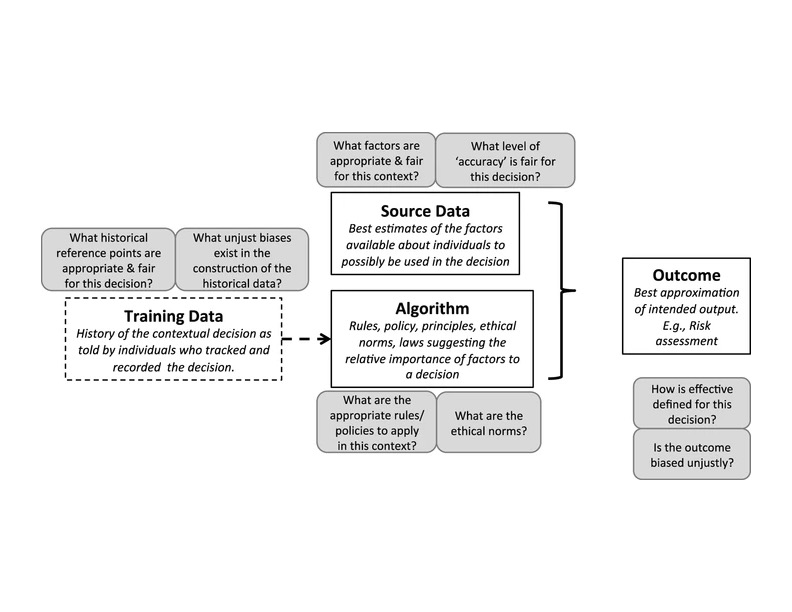Section 11.2: Do Different Individual Learning Styles Impact Training that Uses AI?
Ivan Galay; Carlos Liu; and Maria Obaid
Gagné’s 5 Types of Learning & AI
Gagné’s theory suggests that the effectiveness of learning is highly dependent on the trainer’s awareness of the trainee’s level of learning (1984). Learning tasks for intellectual abilities, according to Gagné (1984), can be arranged in a hierarchy based on their complexity: stimuli identification, response generation, protocol following, vocabulary usage, discrimination, idea creation, rule enforcement, and problem solving. The hierarchy’s main purpose is to define prerequisites that must be met to promote learning at each step.
- Intellectual Skills
Intellectual skills involve “knowing how to do something” or mental processes that allow individuals to react to concepts within a given environment (Gagné, 1984). Internal conditions include prerequisite skill recall, interacting in new ways, and applying learned skills to a variety of situations and contexts.
- Cognitive Strategy
Internal processes that allow the learner to plan, control, and monitor how they think and learn. Instructional design that involves internal and external activities is the core of this cognitive strategy perspective (Richey, 2000 as cited in Gagné, 1984).
- Verbal Information
This is the learner’s ability to share what they have learned. The key principles to this concept include the meaningful internal coding or classifying of information, elaboration and imagery used as cues, and information organized in chunks.
- Attitude
The attitude refers to the individual’s beliefs, values, or biases towards an activity or individual. In this case, some individuals may be more reluctant to interact with the technology because of existing biases. Those attitudes and biases act as barriers to training and development using AI. To prevent these barriers, learners can be encouraged with positive reinforcement.
- Motor Skills
Motor skills are the learner’s abilities to put words into action in chronological order. This involves following steps and procedures to carry out the steps of “motor performance” (Gagné, 1984). The ability to complete a series of physical movements involves three stages: learn the steps, practice them, and refine using feedback.
The Impact of AI
According to Peter Sondergaard, former executive vice president of Gartner Research information is the oil of the 21st century, and analytics is the combustion engine (Haupt, 2016). In learning and development, one of the primary reasons for the buzz around analytics is the need to evaluate the effectiveness of training programs.
A More Personalized Approach
One of the most significant benefits of AI technology in general is that it allows organizations to approach every situation in a much more personalized manner while drawing on the strengths of each employee. This is an improvement from the non-personalized approach organizations used to take not too long ago. This will likely progress to result in even greater personalization with the acquisition of new data.
Constant Feedback Loop
Organizations are now better able to gain information on the current status of their training, and they can easily see how each piece of the puzzle comes together with the rest. Organizations no longer have to invest in training that ultimately does not lead anywhere.
Improved Overview of Effectiveness
Analytics provide leaders the opportunity to have a direct overview of the current state of the work done in their organization, including training. This gives leaders better tools to make informed decisions that will impact the organization’s bottom line. It used to be very difficult to identify what works and what does not simply by looking at data. However, we now have complex systems that can analyze the data for us and predict the outcomes.
More Intuitive Solutions for Employees
Employees undergoing training are now able to make use of better, more intuitive interfaces and general solutions for their training processes, which has had a huge impact on the streamlining of corporate training. There is still a long way to go in this area, but there have been noticeable improvements in the quality of interfaces that employees are given access to when tasked with going through training, and AI has played a big role in these improvements (Shah, 2018).
AI has a significant impact on employee training. Organizations now have a large amount of data they can analyze and use to optimize training programs. Training can be personalized to meet the needs of the learner, focus on areas of learner weakness, recommend appropriate content based on past behavior, predict needs based on roles, and even automatically generate content using content creation algorithms.
The key differences between using AI and other methods of training
One of the most important qualities of AI training is that it is suitable for people with different learning styles. Organizations can deploy AI to train employees by optimizing content to fit user-preferred learning styles. This not only makes participants’ learning experience more enjoyable but helps with knowledge retention and job performance. AI training can help create a more personalized mentoring experience as well. Learning insights helps in developing a broader understanding of learner behavior, leading to improved predictive capabilities. By using these insights, organizations can create smart, more intelligently targeted content that is adaptive, intuitive, and responsive to the learner’s personal needs.
Fairness/impartiality in training using AI

One of the key principles of the use of AI is that it should be designed so it can be audited and any inherent biases removed. This will ensure that employee training is fair and equitable.
Sudarshan’s (2019) research shows that AI in the education industry will grow by 47.5% throughout 2021. The author further suggests that technology will be employed from kindergarten through higher education to corporate training, as it provides the opportunity to create adaptive learning features with personalized tools to improve learners’ experience (Sudarshan, 2019). This shows how important it is to have a solid understanding of AI and how it can be implemented in the workplace to accommodate different learning styles.
Image Attribution
“Ethical Implications and Accountability of Algorithms” by Kirsten Martin is licensed under CC BY-NC 4.0

